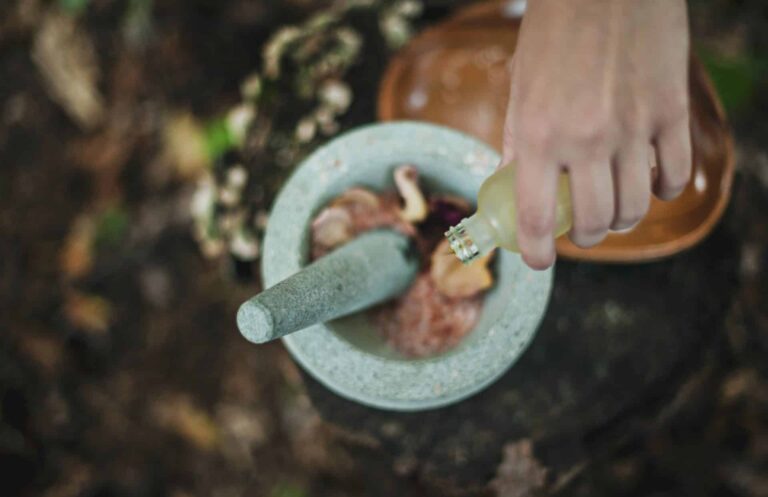
It is mid-September and we are at the cusp of another season, Sharad Ritu. For every season we release Ritucharya guidelines as a part of our overall work on health and wellness. Why is it important to follow Ritucharya? Ayurveda…

The Oil bath , also called Abhyanga Snana in Ayurveda is a highly revered health technique from antiquity in India. In the ancient Siddha medicine system of South India it is known as “Yennai Kuliyal”. Apart from these formal medicine…

A common question we get asked at Krya is about healthy eating timings & habits to follow and meal choices at each time. Today, the media is charged with advice on nutrition and the importance of developing healthy eating habits. Often, these so-called studies also become quite contradictory, and we naturally start looking for some genuine and time tested guidance on on ahara (food) and ahara niyama (dietary practices to observe). A key part of ahara niyama (or healthy eating habits) in Ayurveda is to identify the proper/healthy time to eat. This influences our capacity to digest food and extract nutrients from the food. In fact, choosing the correct time to eat each meal has the same effect on our health as choosing what to eat. In other words, we should spend the same amount of time planning when to eat as planning what to eat. In this post, we are going to see why Ayurveda pays so much attention to meal timing and how this is a key part of developing healthy eating habits. Planning healthy eating schedule: Different doshas influence different dayparts Ayurveda tells us that each day is divided into 4-hour dayparts. Each of these dayparts is connected to the slow rise, peaking, and then falling of a particular dosha in our body. The strength of the surge in the dosha depends upon the movement of the Sun. For example, if there is sunshine during the kapha period, the effect of kapha will be slightly reduced. Similarly, if there is good sunshine, say during a pitta part of the day, pitta will be much more aggravated due to the influence of the Sun. In order to take advantage of these natural surges in a particular dosha, we are advised to do certain activities during certain parts of […]
The Abhyanga is a key Dinacharya, daily practice recommended in Ayurveda to impart Bala (strength), Ayush (health and Immunity) and Ayu (long life) to the body. This practice forms an important part of Krya’s recommendations to improve hair growth, impart better strength and texture to hair and to also improve the quality, tone and texture of skin. An abhyanga is also a very important Dincharya that is recommended for specific cases of hairfall like post partum hairfall, hairfall due to sudden and extreme weight loss (cases of high vata aggravation). Many Krya consumers have found a HUGE difference to their hair health, skin texture and overall well being and immunity when abhyanga is added to their daily routine. The practice of abhyanga is mentioned as a health giving practice in all the Ayurvedic Samhitas. In today’s post, we will analyse the abhyanga shloka in Ashtanga Hridayam’s Dinacharya chapter and see why Acharya Vagbhatta says this is such an important and useful practice. Ashtanga Hridayam: part of the Brhat Trayee Texts in Ayurveda We have written often about how empowering Ayurveda is as a Vaidya shastra. Ayurveda is considered an UpaVeda, an offshoot of the vedas themselves and is found in the Atharva Veda. This Upa Veda is a Divine Science which has been handed down from the Devas to the Raja Rishis. It was then passed down in oral tradition until it was compiled about 3000 – 4000 years ago by Agnivesa. Agnivesa’s Samhita, was then further redacted by Charaka. Charaka’s redaction of Agnivesa Samhita became much more famous than the original, and soon everyone began to refer to Charaka’s redaction as the Charaka Samhita. Charaka Samhita forms the first of the Brhita Trayee. The second text in the Brihat Trayee is Sushruta Samhita. The Sushruta Samhita concentrates more on […]

According to Ayurvedic seasonal guidelines, Vasanta / spring is now here – so we must all be following Vasanta Ritucharya – modified seasonal guidelines for Spring. If you have already begun to sniffle, sneeze and look desperately for tissues, this season change may have already caught you unawares. One of the most powerful concepts in Ayurveda medicine is the concept of Ritucharya – seasonal regimens to be followed to naturally balance the changes in your doshas due to the change in climate and season. As we have seen in other posts on Ritucharya and Dinacharya, following daily living guidelines or Dinacharya and adjusting these guidelines in every season, or Ritucharya are 2 key ayurvedic cornerstones to good health. When we regularly follow the guidelines of Dinacharya and Ritucharya and also ensure that our choice of Ahara (food) and the way we prepare and eat this food is according to our prakriti, we ensure we are in a state of harmony and balance. This is the Ayurvedic concept of preventive health care. Ayurveda: unique concept of preventive health care Ayurveda’s goal is to prevent the formation of disease by following certain guidelines of good living. This is best described by Acharya Charaka in his Sutra Sthana shlokas: “Swasthasya Swasthya Rakshanam Aaturasya Vikara Prashamanam Cha” He explains that the goal of medicine (Ayurveda) is to rejuvenate and preserve the health of the healthy and then to alleviate diseases in the ill. This order of first tending to the healthy and then treating the sick is specific to Ayurveda. It explains why so much of Ayurveda is primarily focused on health giving regimens rather than disease treatment . This emphasis on preserving health is why Dincharya and Ritucharya regimes (regimes for daily living and special regimes to follow in specific seasons) come first […]
The practice of ayurvedic oiling , i.e using ayurvedic skin and hair oils is essential for maintaining skin and hair health. Regular ayurvedic oiling improves hair and skin health, helps restore and repair these organ systems, balances dosha imbalances and gives many other important health benefits for the body. Ayurveda also recommends the balanced consumption of “sneha” or oils & fats to keep the bones and joints in good working condition. Certain organs like the brain and the eyes are high in fat composition so the regular intake of good fats is recommended to keep these organs in good working order. Properties of different vegetable oils – as per Ayurveda Every vegetable oil / fat has a different quality as per traditional medicine. Cow ghee: Cow ghee is considered tridoshic in its nature, and helps calm down pitta and vata without increasing kapha greatly. So if your skin and hair is extremely dry or chemically damaged, the addition of cow ghee in your diet will be very beneficial. To avoid aggravating Kapha, it is better to consume only melted cow ghee. Do keep in mind that this ghee should be made the ayurvedic way from the milk of hormone and antibiotic free, A2 desi cows only. Sesame Oil: Sesame oil is considered “the” base oil in Ayurveda. It goes into every external abhyanga, hair and skin formulation at Krya. Sesame is fantastic at balancing vata dosha, so if you have a lot of aches and pains, external application of sesame can go a long way in correcting this. Sesame, however, can increase pitta – so if you have a high pitta constitution, it is better to cut down on the consumption of sesame seeds and oils, although you can continue to use this externally. High pitta dosha manifests […]





